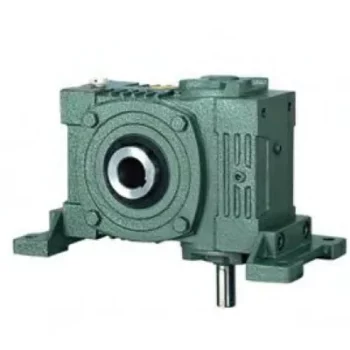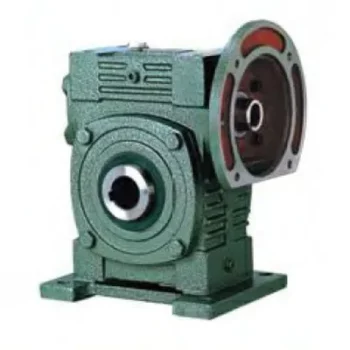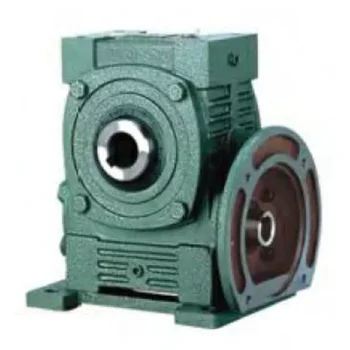Product Description
Bevel Helical Gearbox Speed Reducer Spiral 90 Degree Right Angle Best Supplyers Competitive Price Parallel Shaft Alloy Stainless Steel Straight Helical Gearboxs
Application of Bevel Helical Gearbox
Bevel helical gearboxes are used in a wide variety of applications, including:
- Automotive: Bevel helical gearboxes are used in automotive transmissions to transmit power from the engine to the drive wheels.
- Machine tools: Bevel helical gearboxes are used in machine tools to provide smooth and controlled movement.
- Robotics: Bevel helical gearboxes are used in robotics to provide precise and controlled movement.
- Aerospace: Bevel helical gearboxes are used in aerospace applications, such as aircraft landing gear and satellite control systems.
- Other: Bevel helical gearboxes are also used in a variety of other applications, such as wind turbines, conveyor belts, and elevators.
Bevel helical gearboxes offer a number of advantages over other types of gearboxes, including:
- Smooth operation: Bevel helical gears mesh more gradually than spur gears, which results in smoother operation.
- High efficiency: Bevel helical gears have a higher efficiency than spur gears, which means that they can transmit more power with less loss.
- Longer life: Bevel helical gears have a longer life than spur gears, which means that they require less maintenance and replacement.
- Quiet operation: Bevel helical gears operate more quietly than spur gears, which is important in some applications, such as automotive and robotics.
However, bevel helical gearboxes also have some disadvantages, including:
- Cost: Bevel helical gearboxes are more expensive than spur gears.
- Size: Bevel helical gearboxes are larger than spur gears, which can be a limitation in some applications.
- Weight: Bevel helical gearboxes are heavier than spur gears, which can be a limitation in some applications.
Overall, bevel helical gearboxes are a versatile and reliable component that can be used in a wide variety of applications. They offer a number of advantages over other types of gearboxes, including smooth operation, high efficiency, long life, and quiet operation. However, they also have some disadvantages, including cost, size, and weight.
Here are some specific applications of bevel helical gearboxes:
- Automotive: Bevel helical gearboxes are used in automotive transmissions to transmit power from the engine to the drive wheels. They are also used in differentials to allow the wheels to rotate at different speeds when turning a corner.
- Machine tools: Bevel helical gearboxes are used in machine tools to provide smooth and controlled movement. They are used in a variety of applications, such as lathes, milling machines, and drills.
- Robotics: Bevel helical gearboxes are used in robotics to provide precise and controlled movement. They are used in a variety of applications, such as robotic arms, grippers, and manipulators.
- Aerospace: Bevel helical gearboxes are used in aerospace applications, such as aircraft landing gear and satellite control systems. They are used in a variety of applications, such as to transmit power from the engine to the landing gear, and to control the movement of satellites.
- Other: Bevel helical gearboxes are also used in a variety of other applications, such as wind turbines, conveyor belts, and elevators. They are used in a variety of applications, such as to transmit power from the wind turbine to the generator, and to control the movement of conveyor belts and elevators.
Here are some of the benefits of using bevel helical gearboxes:
- High efficiency: Bevel helical gears have a high efficiency, which means that they can transmit more power with less loss.
- Longer life: Bevel helical gears have a longer life than spur gears, which means that they require less maintenance and replacement.
- Smooth operation: Bevel helical gears mesh more gradually than spur gears, which results in smoother operation.
- Quiet operation: Bevel helical gears operate more quietly than spur gears, which is important in some applications, such as automotive and robotics.
Here are some of the drawbacks of using bevel helical gearboxes:
- Cost: Bevel helical gearboxes are more expensive than spur gears.
- Size: Bevel helical gearboxes are larger than spur gears, which can be a limitation in some applications.
- Weight: Bevel helical gearboxes are heavier than spur gears, which can be a limitation in some applications.
Overall, bevel helical gearboxes are a versatile and reliable component that can be used in a wide variety of applications. They offer a number of advantages over other types of gearboxes, including smooth operation, high efficiency, long life, and quiet operation. However, they also have some disadvantages, including cost, size, and weight.
| Application: | Motor, Electric Cars, Motorcycle, Machinery, Marine, Toy, Agricultural Machinery, Car |
|---|---|
| Function: | Distribution Power, Clutch, Change Drive Torque, Change Drive Direction, Speed Changing, Speed Reduction, Speed Increase |
| Layout: | Three-Ring |
| Hardness: | Hardened Tooth Surface |
| Installation: | Torque Arm Type |
| Step: | Stepless |
| Samples: |
US$ 9999/Piece
1 Piece(Min.Order) | |
|---|

Can a Worm Gearbox Be Used in Heavy-Duty Machinery?
Yes, a worm gearbox can be used in heavy-duty machinery and is often chosen for such applications due to its inherent characteristics and advantages:
- High Torque Transmission: Worm gearboxes are known for their ability to transmit high torque loads, making them suitable for heavy-duty machinery that requires significant power transmission.
- Load Distribution: The design of worm gears provides robust load distribution and excellent contact between the worm and worm wheel teeth. This enhances their load-carrying capacity, making them capable of handling heavy loads without premature wear or failure.
- Compact Design: Worm gearboxes are compact and offer high reduction ratios in a single stage. This allows for the reduction of high input speeds to lower output speeds, often required in heavy-duty machinery.
- Overload Protection: Worm gears have a natural self-locking feature, which means the gear cannot be easily back-driven by external forces. This feature provides inherent overload protection, preventing damage to the gearbox and machinery in cases of sudden load spikes.
- Smooth Operation: Worm gearboxes offer smooth and steady operation, which is crucial for heavy-duty machinery where precision and controlled movement are essential.
However, when considering the use of a worm gearbox in heavy-duty applications, it’s important to ensure proper engineering and sizing. The design should account for factors such as load, speed, duty cycle, lubrication, and temperature to ensure optimal performance and longevity.
Overall, worm gearboxes are well-suited for heavy-duty machinery across various industries, including mining, construction, manufacturing, and more.

How to Calculate the Efficiency of a Worm Gearbox
Calculating the efficiency of a worm gearbox involves determining the ratio of output power to input power. Efficiency is a measure of how well the gearbox converts input power into useful output power without losses. Here’s how to calculate it:
- Step 1: Measure Input Power: Measure the input power (Pin) using a power meter or other suitable measuring equipment.
- Step 2: Measure Output Power: Measure the output power (Pout) that the gearbox is delivering to the load.
- Step 3: Calculate Efficiency: Calculate the efficiency (η) using the formula: Efficiency (η) = (Output Power / Input Power) * 100%
For example, if the input power is 1000 watts and the output power is 850 watts, the efficiency would be (850 / 1000) * 100% = 85%.
It’s important to note that efficiencies can vary based on factors such as gear design, lubrication, wear, and load conditions. The calculated efficiency provides insight into how effectively the gearbox is converting power, but it’s always a good practice to refer to manufacturer specifications for gearbox efficiency ratings.

How to Select the Right Worm Gearbox for Your Application
Selecting the right worm gearbox for your application involves careful consideration of various factors:
- Load Requirements: Determine the torque and load requirements of your application to ensure the selected gearbox can handle the load without compromising performance.
- Speed Reduction: Calculate the required gear reduction ratio to achieve the desired output speed. Worm gearboxes are known for high reduction ratios.
- Efficiency: Consider the gearbox’s efficiency, as worm gearboxes typically have lower efficiency due to the sliding action. Evaluate whether the efficiency meets your application’s needs.
- Space Constraints: Assess the available space for the gearbox. Worm gearboxes have a compact design, making them suitable for applications with limited space.
- Mounting Options: Determine the mounting orientation and configuration that best suits your application.
- Operating Environment: Consider factors such as temperature, humidity, and exposure to contaminants. Choose a gearbox with appropriate seals and materials to withstand the environment.
- Backlash: Evaluate the acceptable level of backlash in your application. Worm gearboxes may exhibit more backlash compared to other gear types.
- Self-Locking: If self-locking capability is required, confirm that the selected gearbox can prevent reverse motion without the need for external braking mechanisms.
- Maintenance: Consider the maintenance requirements of the gearbox. Some worm gearboxes require periodic lubrication and maintenance to ensure proper functioning.
- Cost: Balance the features and performance of the gearbox with the overall cost to ensure it aligns with your budget.
Consult with gearbox manufacturers or experts to get recommendations tailored to your specific application. Testing and simulations can also help validate the suitability of a particular gearbox for your needs.


editor by CX 2023-09-25
